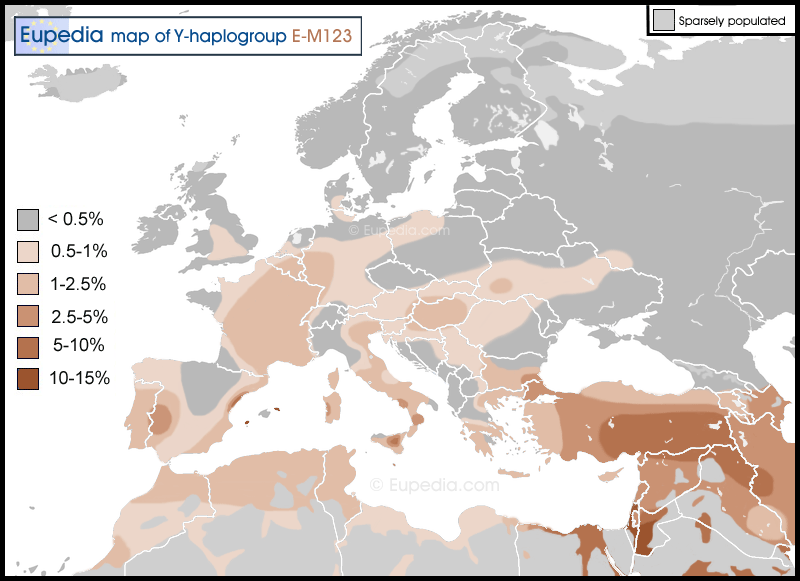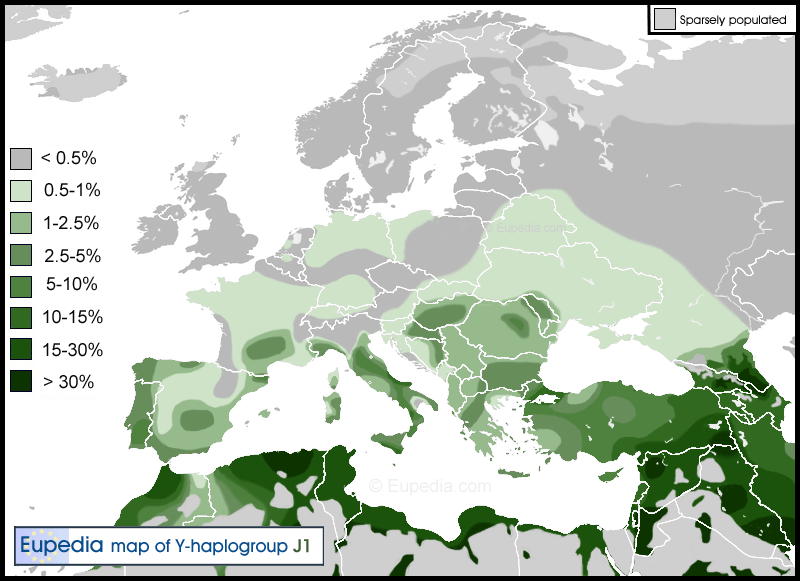To complete the series of main E1b1b subclades after E-V13 and E-M81, here is the map of E-M123, the most Middle Eastern of the three clades.

I admit that I am a bit at a loss regarding its origin in Europe. M123 doesn't appear to be related to Neolithic cultures in the Balkans, which are almost exclusively E-V13 within haplogroup E. All I can say is that it is found at higher frequencies in places colonised by the Phoenicians (over 10% in Ibiza and in parts of Sicily) and that it may have been spread to Western Europe by the Romans and the Jews. Its distribution in Britain matches quite well the main Roman cities, roughly a triangle between London, Chester/Manchester and Bristol. It's also been found in southern Scotland. Unfortunately I have no data for the Latium in Italy, but the highest percentage appears to be in Campania (based on a small sample size). It was probably brought to Italy by the Etruscans from Anatolia.
The hotspot in Spanish Extremadura may have something to do with the major Roman colony of Merida. But that alone wouldn't explain the overall higher frequency in western Iberia, mimicking those of E-M81 and E-V13. Western Iberia is really special in having a lot of the three main E1b1b subclades, despite the fact that the three have very different distributions.

I admit that I am a bit at a loss regarding its origin in Europe. M123 doesn't appear to be related to Neolithic cultures in the Balkans, which are almost exclusively E-V13 within haplogroup E. All I can say is that it is found at higher frequencies in places colonised by the Phoenicians (over 10% in Ibiza and in parts of Sicily) and that it may have been spread to Western Europe by the Romans and the Jews. Its distribution in Britain matches quite well the main Roman cities, roughly a triangle between London, Chester/Manchester and Bristol. It's also been found in southern Scotland. Unfortunately I have no data for the Latium in Italy, but the highest percentage appears to be in Campania (based on a small sample size). It was probably brought to Italy by the Etruscans from Anatolia.
The hotspot in Spanish Extremadura may have something to do with the major Roman colony of Merida. But that alone wouldn't explain the overall higher frequency in western Iberia, mimicking those of E-M81 and E-V13. Western Iberia is really special in having a lot of the three main E1b1b subclades, despite the fact that the three have very different distributions.


